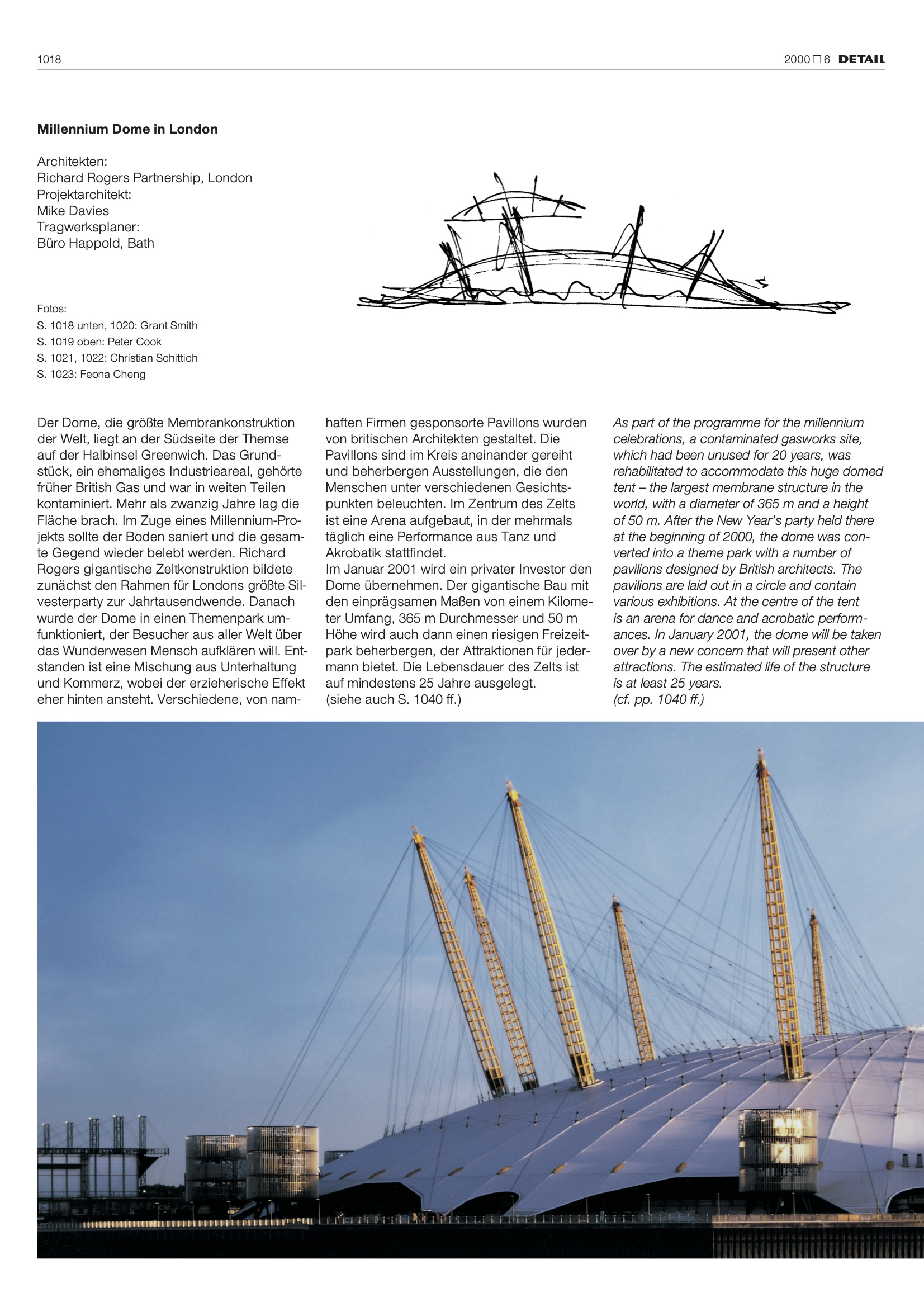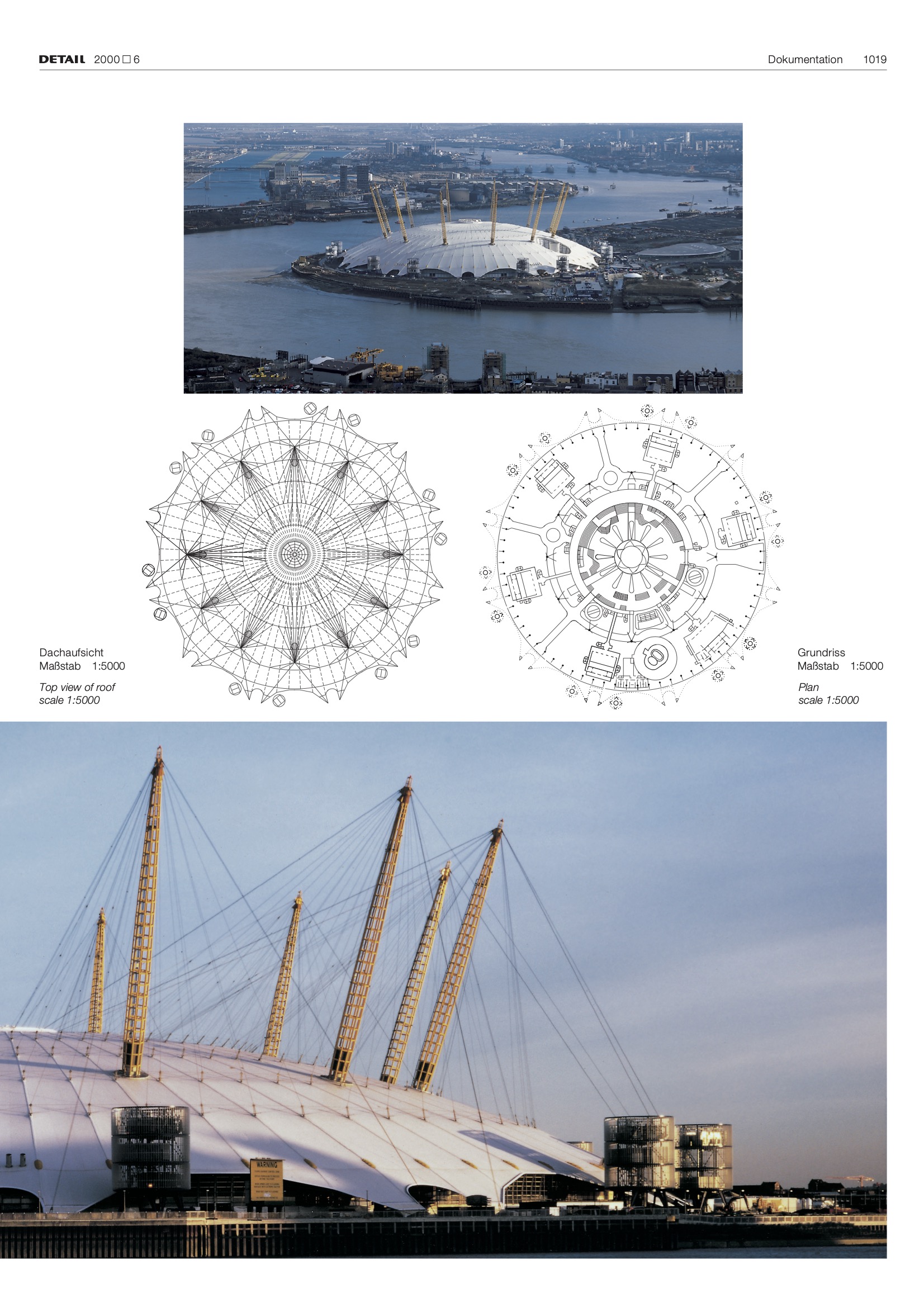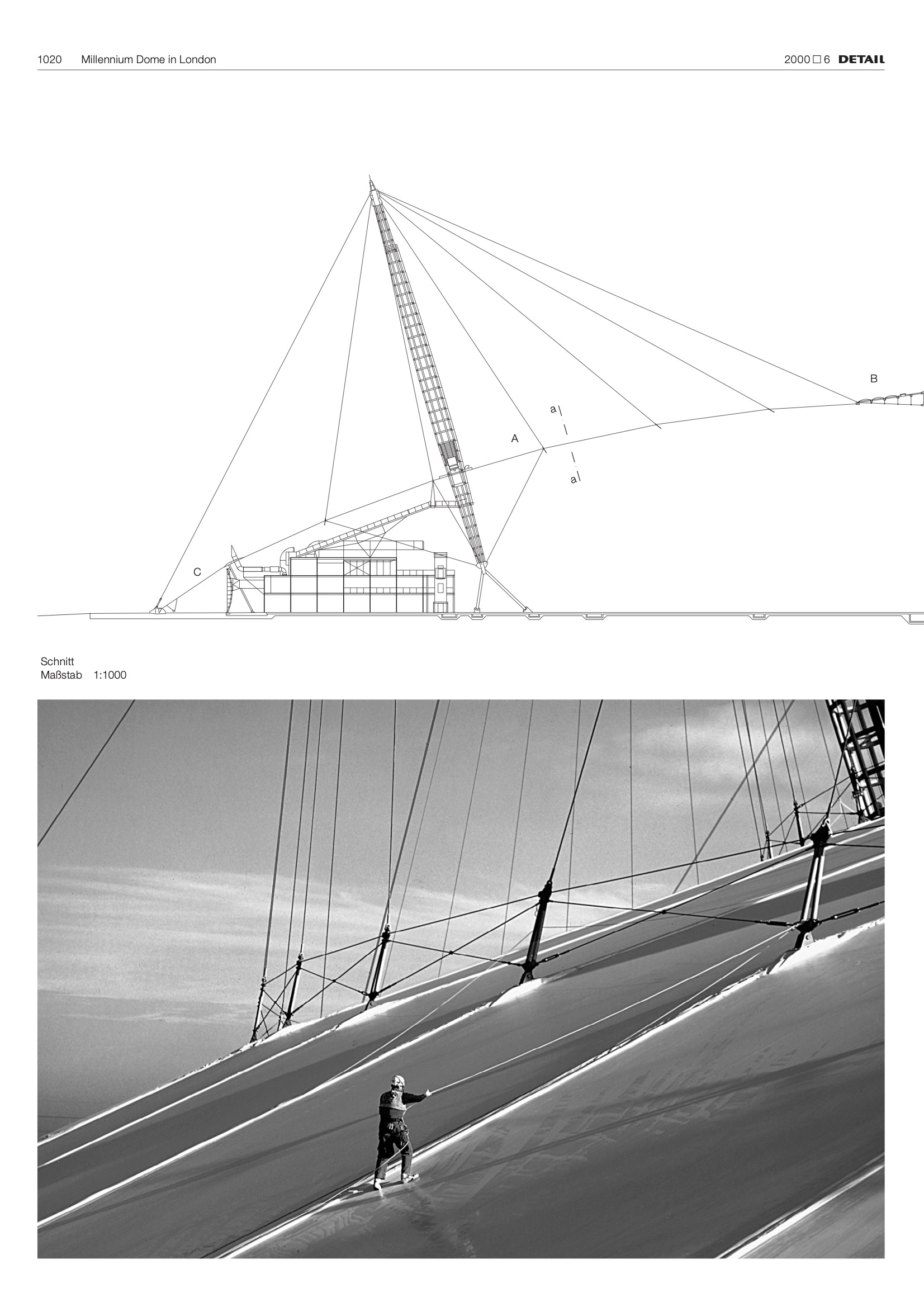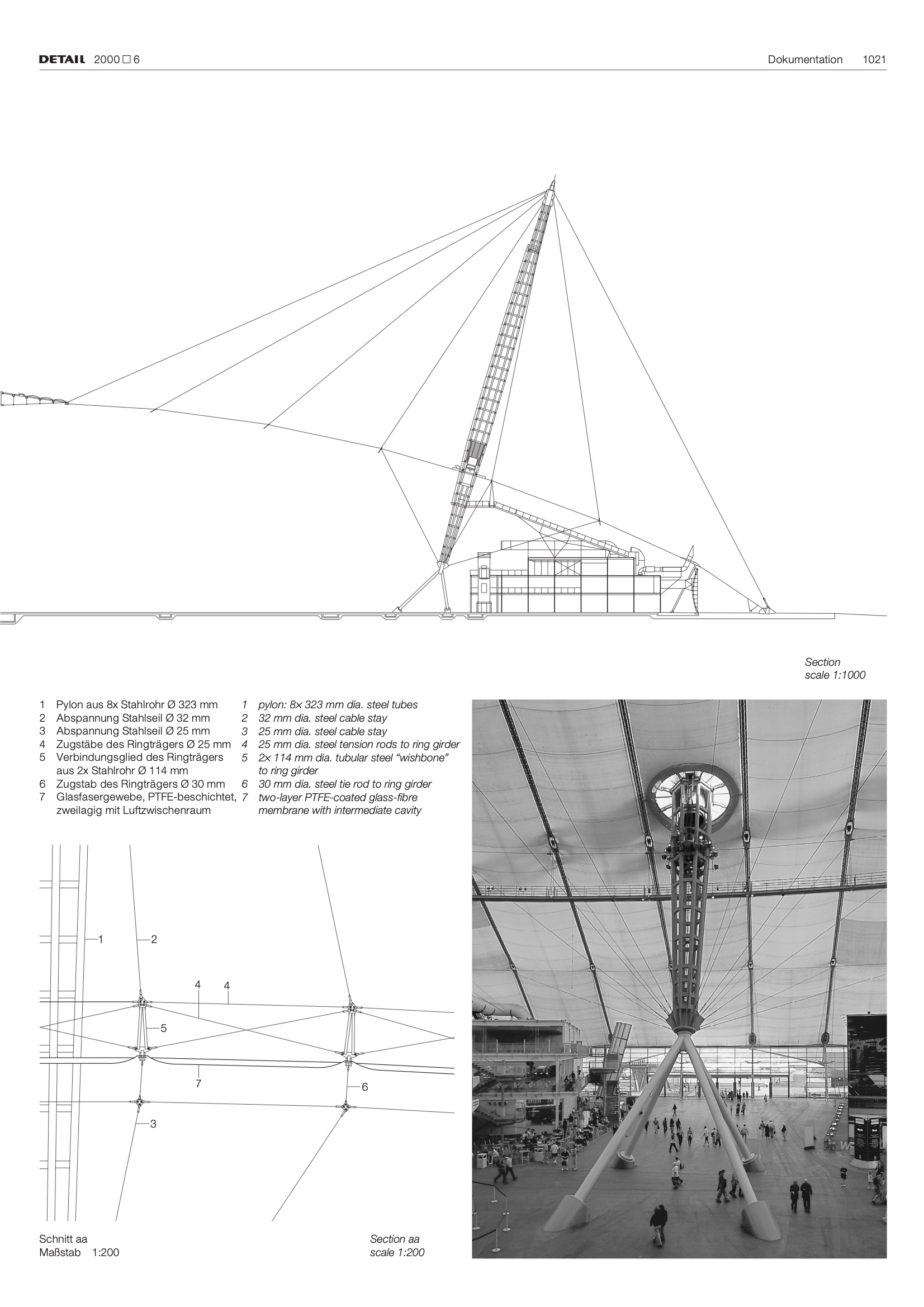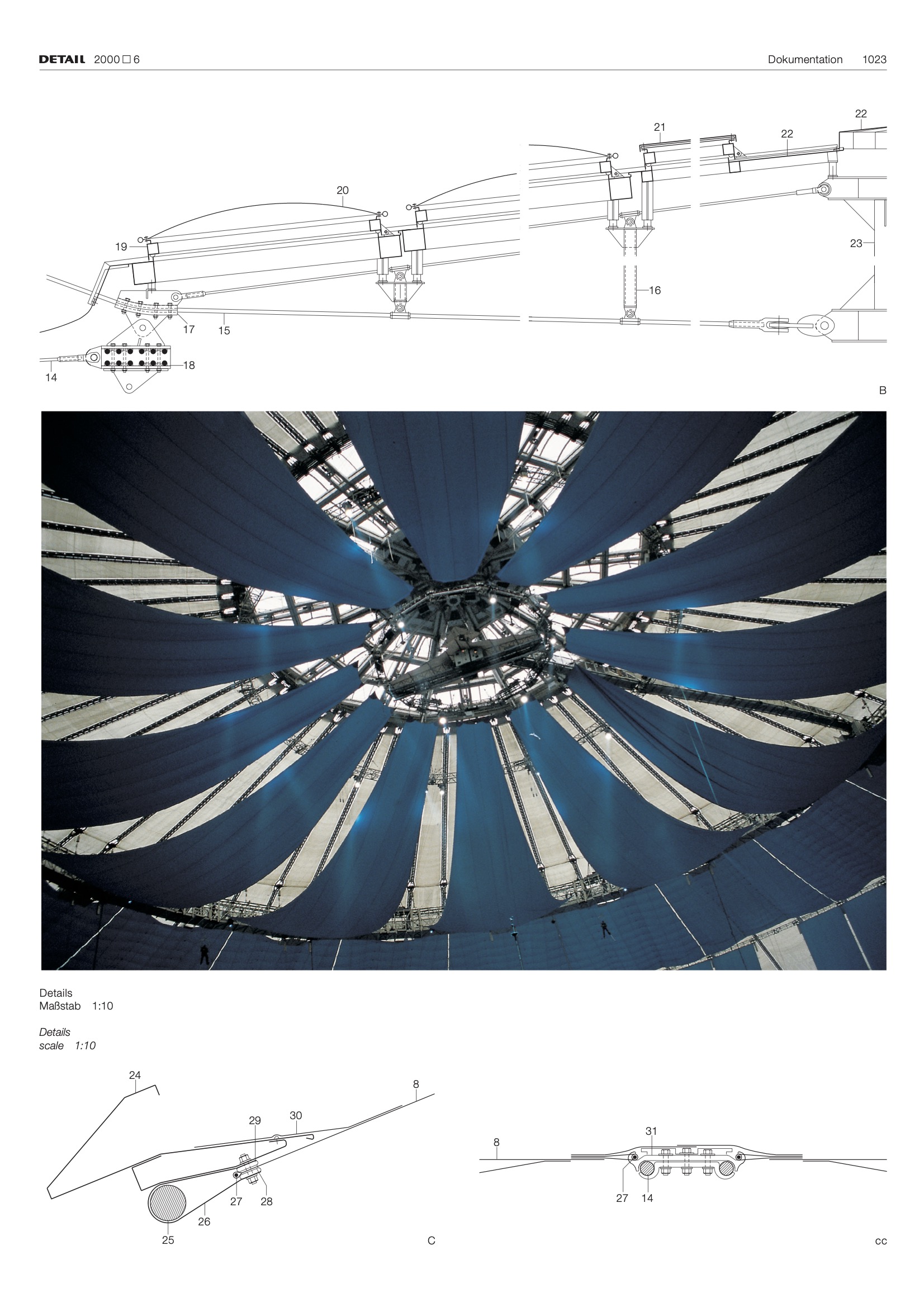The Big Top of all Superlatives: Millennium Dome in London (1999)

It was regarded as a masterpiece of construction engineering but also as a monument to failure and Europe’s largest vacant building problem: erected in 1996 to plans by Richard Rogers Partnership and Buro Happold, the Millennium Dome can look back on eventful years since its inauguration in a New Year’s Eve 10,500-guest party. One year later it became the scene of the Millennium Experience, a sort of mini world’s exposition involving twelve pavilions. Various uses followed, including a time as a homeless shelter over Christmas 2014, after which the structure stood empty for years. Eventually it was sold to a private investor, which then had the dome remodelled according to plans by HOK, renaming it “The O2” after its main sponsor, the mobile network operator acquired in the meantime by the Telefonica Group. Since then the largest membrane structure in the world has served as a concert arena and sometimes as a sports venue, for example at the 2012 Summer Olympics.
Cultural landmark
Whether London really needed such a structure was disputed from the very start. But New Labour under PM Tony Blair indefatigably drove construction of the Millennium Dome forward as a cultural landmark and beacon of the conversion of East London industrial areas on the bank of the River Thames. For almost a century British Gas had owned the site, thoroughly contaminating it in the process, but now to mark the beginning of a new millennium a strong signal was to be sent. Numerical symbolism was important at first: the domed tent has a diameter of 365m, is 52m high and is suspended from 12 masts. One could say it is a calendar in built form.
The supporting structure at the higher part of the canopy consists of a network of 72 radial cables set in pairs, and seven concentric rings of cables each distanced between 25 and 30 metres apart. For sufficient bearing capacity should one of the cables fail, each ring is made up of several individual cables – for example twelve with a 48mm diameter in the innermost circle. The cable rings for their part are suspended from the 100m-high structurally identical masts, each welded out of 12 steel sections and with articulated anchoring at their base points.
The actual canopy is thus suspended from the rings of cables and the radial cables – if it would rest on them, the membrane would eventually form dish-like concavities in which rainwater would collect. Two layers of Teflon-coated fibreglass – heavier and denser on the outside to withstand the weather, and lighter and wider-meshed on the inside, were used for the canopy.


